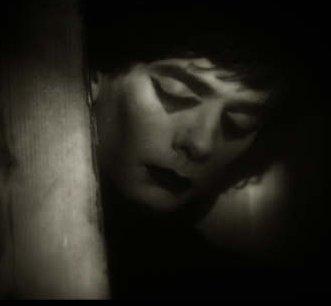
The Cabinet of Dr Caligari (2005) (Movie Review)
All the hand-wringing and fanboy indignation that accompanied the early days of the “remake everything” phase has mostly subsided to shrugs of resignation and cautious optimism. There are bad remakes and good remakes and any movie with a modicum of popular recognition stands a good shot at being remade if there’s a chance of making a few bucks off of it. From a purely financial standpoint, remakes make sense. Unless you’re a b-actor on the convention circuit, fanboy passion doesn’t pay the bills.
While many horror remakes are cash-grabs relying on name-recognition, some are actually labors of love made by devout fans of the original. While logically it would seem that the film made as a tribute to the loved original would be intrinsically preferable to the more common focus group tested, director-for-hire helmed, major studio horror film product, but that’s not always the case. Sometimes all that reverence gets in the way of making a good movie. An abundance of reverence combined with a lack of interest in new ideas is what makes David Lee Fisher’s 2005 remake of “The Cabinet of Dr Caligari” a pointless, if occasionally pretty, exercise in fan art.
The original 1920 silent film “The Cabinet of Dr Caligari” is a landmark film, important not just to the realm of horror but also to the greater film world. The expressionistic style of the art design is still relevant and avant garde today and its surreal imagery has been so widely borrowed and repurposed in the ensuing 90 years that elements of “Caligari” would be recognizable to many people who have never actually seen the movie. Dr Caligari is a carnival barker whose prize act is a somnambulist who can predict the future while in a deep sleep. After a rash of strange attacks break out across the village, Caligari and his sleepwalking assistant Cesare come under suspicion.
While the story of “Dr Caligari” is original and highly intricate for its time (the film is widely credited as having the first twist ending), the look of the film is what cemented its classic status. The backgrounds and sets are geometrically askew with shadows and lights created by paint instead of electricity. There are directors today (many of them named Tim Burton) who have basically made their career by borrowing the bold contrasts, dark atmosphere and elaborate imagery of German Expressionistic films such as this one.
No matter how often Tim Burton keeps returning to the same 90-year-old well, it has to be said that he injects a healthy portion of himself into his films. The problem with this superfluous remake of “Caligari” is that there is literally nothing new or original on display. Fisher’s remake is nothing more than a fastidious recreation of the original, with the addition of sound. It’s hard not to make comparisons to Gus Van Zant’s equally self-indulgent “Psycho” remake. Even that movie has more reason to be than the “Caligari” remake. There really are some people who hesitate to watch Psycho because it’s old and in black and white and there are no doubt many people today who think of Vince Vaughn instead of Anthony Perkins when they think of “Psycho”. Of course, those people are idiots and whether their cinematic laziness even entitles them to deserve a cinematic version of “Psycho” is beyond the point: a justification can be made.
It’s hard to imagine just what Fisher was trying to accomplish with this remake. Silent films are probably the hardest films for modern-day audiences to sit through, but that’s as much a function of the stagey acting, melodramatic storylines and general stiffness as it is of the fact that there’s no dialogue. Keeping everything the same except that now the actors speak accomplishes little, if anything. The acting itself is also largely terrible. It’s awkward to keep the look and mannerisms of a silent film while adding in dialogue. The end product is oddly stiff acting that isn’t appropriate to the silent era or ours.
While I actually think Fisher’s remake is a very interesting and well-done art project, it’s a pointless film that I couldn’t recommend to anyone. Anyone interested in “The Cabinet of Dr Caligari” should just go watch the original, which holds up remarkably well for a silent film. Anyone not interested in “Caligari” probably isn’t going to watch or enjoy a remake just because it has actors who speak. A tip of the hat is deserved for all the hard work that went into making such a remarkably dead on 21st century recreation of a 1920 film, but this remake is only essential for the most die-hard of “The Cabinet of Dr Caligari” fans. Assuming there are any that are still alive and weren’t directly involved in the making of this movie.

